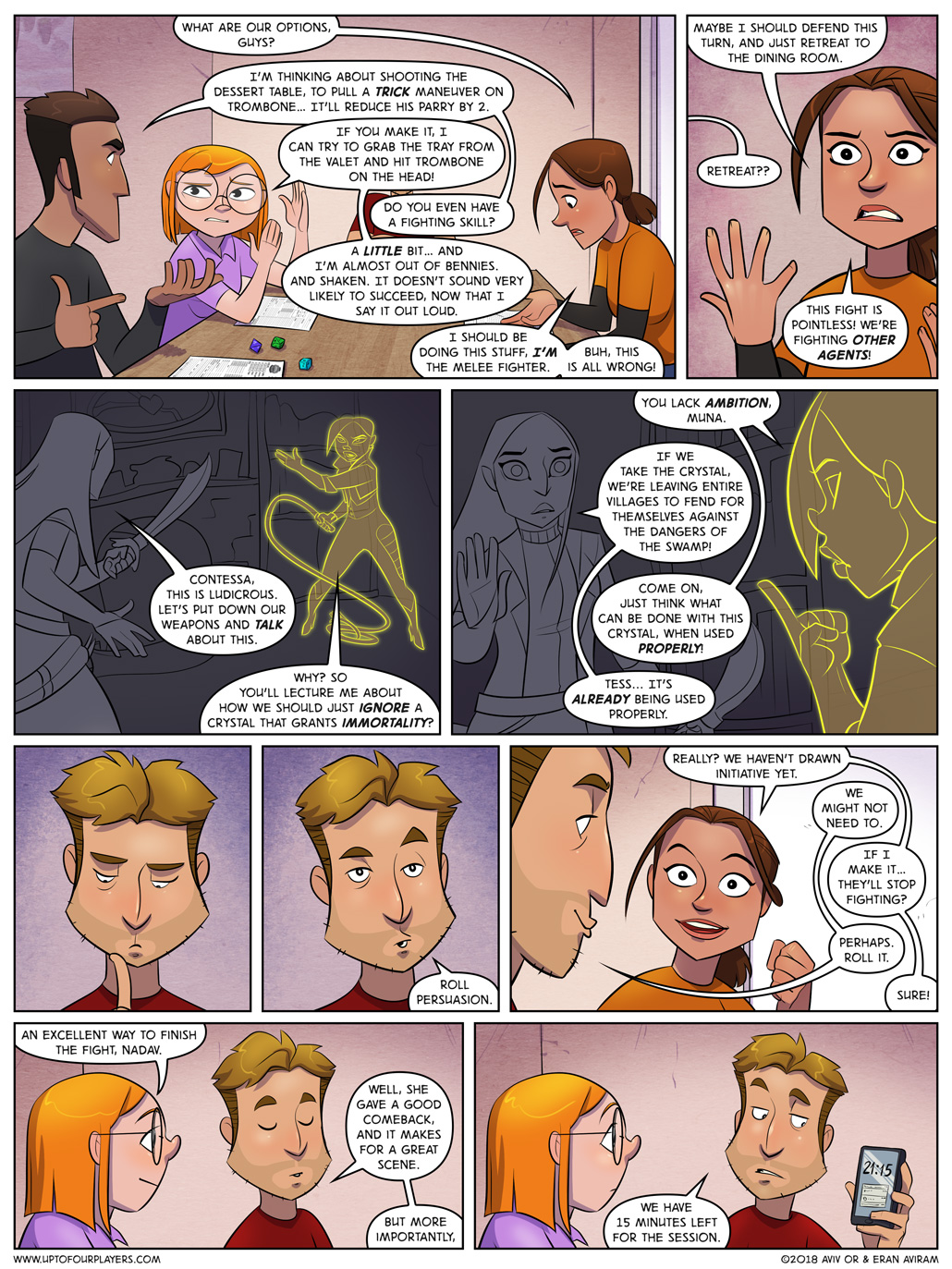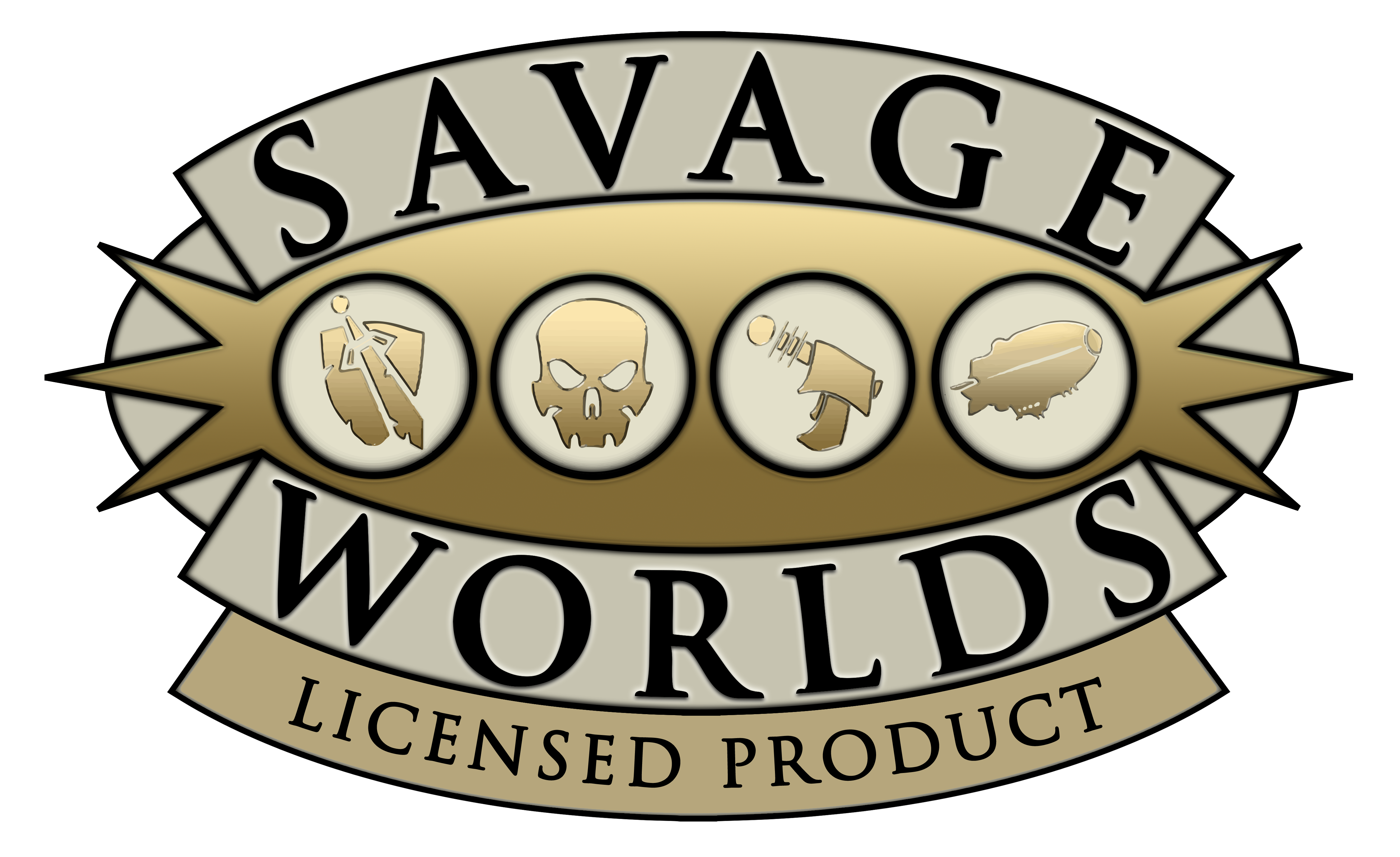Home is Where the Heart is – Page 24
Many players are intimidated by the thought of GMing a game, but consider this:
The GM doesn’t need to be able to improvise quickly and create new things on the spot; she can ask the players for their ideas. She doesn’t need to know the rules better than everyone else; she can ask the person who knows them best what do the rules say and make a ruling based on that.
So what does the GM actually must do? She’s making sure that the game is running along as we all intended it to. That we’re all having fun in the way we decided we want to have fun in this specific game.
In our case here, one of the intentions is to enjoy tense combat situations – and this was actually already achieved by this point. Another intention, as simple as it might sound, is to finish on time. Nadav had to consider these points, along with a few more, and had to make a judgement call. He could have also, for example, ended with a cliffhanger in the middle of the fight, to continue next week (he didn’t because he doesn’t think this adventure still has enough things that might happen in it to fill another entire session).
He decided to grab the opportunity Rotem gives him, to bring the fight to a satisfying conclusion. Well, depends on the dice really; he could have just said Rotem’s appeal to Contessa works, but again, the party loves the tension – so let’s bring in the dice! And see what happens, and how we continue this. (Nadav, of course, is taking my advice about dice rolls, and already has an idea or two about what to do if the check fails)
News!
I really didn’t plan this, but today’s post resonates magnificently with today’s new On the Shoulders of Dwarves, in which we talk about the GM’s “hats” (responsibilities) and which of them can be actually be handed out to the players.
Last week’s RPG article was about NPC vs NPC action – should you even roll for it, if no players are involved?




